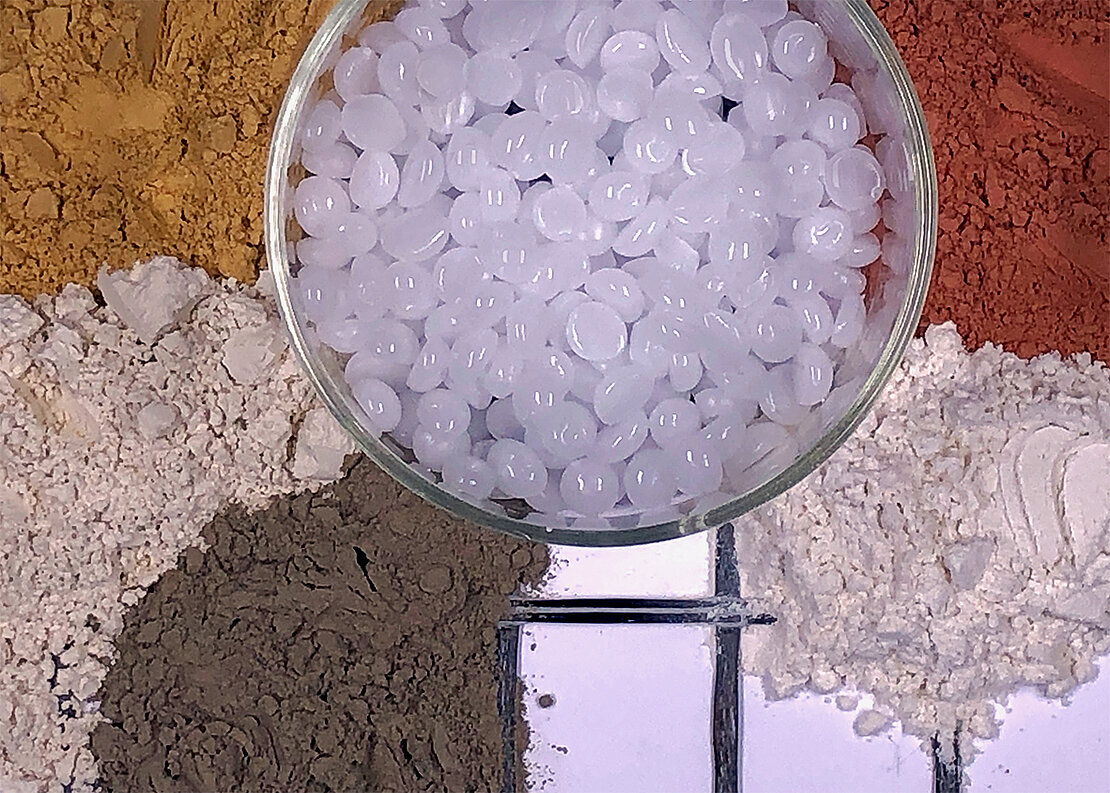Target-oriented mixture development of geopolymers based on calcined clays and natural pozzolans for material-minimised carbon-reinforced concrete structures
Geopolymer binders can be an alternative to classic cement-based systems. In the production of a geopolymer binder, large amounts of CO2 and energy can be saved and comparable properties can be achieved through the targeted selection of educts. Currently, the development of new geopolymer mixtures is based on "trial and error" procedures.
The aim of this project is to characterize the properties of the reactants in such a way that it is possible to develop targeted binders for automated production. By means of statistical test planning, a comprehensive test program will be defined, with which the decisive factors for processability and strength development can be identified and quantified. Subsequently, geopolymer binders can be adjusted with specifications from the project partners so that they can be used for the various processes of automated production. The life cycle assessment of the reactants is to be taken into account in the compound design.

Scientists

D-52062 Aachen (Germany)

D-52062 Aachen (Germany)
Cooperations
Publikationen | Publications
Kruppa, H.; Kalthoff, M.; Neef, T.; Reißig, S.; Mechtcherine, V.; Raupach, M.; Matschei, T.; Vollpacht, A. (2023) Alkali-Activated Binder Requirements for Extrusion and 3d-Printing of Carbon Reinforced Concrete in: Ilki, A.; Çavunt, D.; Çavunt, Y. S. [eds.] Building for the Future: Durable, Sustainable, Resilient – Proc. of fib Symposium 2023, 05.–07.06.2023 in Istanbul (Turkey), publ. in: Lecture Notes in Civil Engineering 349, Cham: Springer, p. 1275–1283 – DOI: 10.1007/978-3-031-32519-9_129
Kruppa, H.; Kalthoff, M.; Neef, T.; Reißig, S.; Mechtcherine, V.; Raupach, M.; Matschei, T.; Vollpracht, A. (2023) Alkali-Activated Binder Requirements for Extrusion and 3d-Printing of Carbon Reinforced Concrete in: Ilki, A.; Çavunt, D.; Çavunt, Y. S. [eds.] Building for the Future: Durable, Sustainable, Resilient – Proc. of fib Symposium 2023, 05.–07.06.2023 in Istanbul (Turkey), publ. in: Lecture Notes in Civil Engineering 349, Cham: Springer, p. 1275–1283 – DOI: 10.1007/978-3-031-32519-9_129
Kruppa, H.; Vollpracht, A. (2023) Einfluss der Mischungskonzeption auf die Verarbeitbarkeit von Geopolymeren in: Claßen, M.; Hegger, J.; Matschei, T.; Raupach, M. [eds.] Beiträge zur 10. DAfStb-Jahrestagung mit 62. Forschungskolloquium, 26./27.09.2023 in Aachen, p. 249–258 – DOI: 10.18154/RWTH-2023-08021
Kruppa, H.; Vollpracht, A. (2023) Systematic Mix Design Study on Geopolymers—Prediction of Compressive Strength in Buildings 13, issue 10, 2617 – DOI: https://doi.org/10.3390/buildings13102617
Utech, T.; Kruppa, H.; Vollpracht, A.; Scheffler, Chr. (2022) Interphases with organic/anorganic layered micro-structures for enhanced carbon-fiber-matrix interaction in alkali-activated binders in: Stokkeland, S.; Braarud, H. C. [eds.] Concrete Innovation for Sustainability – Proc. for the 6th fib International Congress 2022, 12.–16.06.2022 in Oslo (Norway), Oslo: Novus Press, p. 547–556.
Vakaliuk, I.; Scheerer, S.; Liebold, F.; Wagner, F.; Kruppa, H.; Vollpracht, A.; Curbach, M. (2024) Properties of the High-Performance Matrix of TRC Elements Cast Under Vacuum Conditions in: Mechtcherine, V.; Signorini, C.; Junger, D. [eds.]: Transforming Construction: Advances in Fiber Reinforced Concrete – Proc. of XI RILEM-fib Int. Symp. on Fiber Reinforced Concrete (BEFIB 2024), 15.–18.09.2024 in Dresden, publ. in RILEM Bookseries, Vol. 54, Cham: Springer Nature Switzerland, p. 786–793 – https://doi.org/10.1007/978-3-031-70145-0_93




